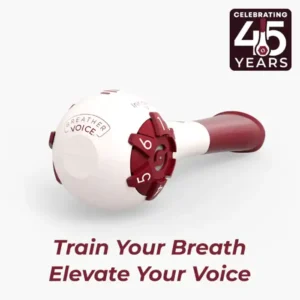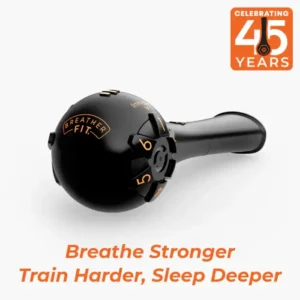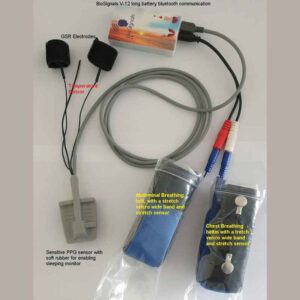Breathing Biofeedback. Proper Breathing Pattern
In today’s fast-paced world, mastering the art of proper breathing is essential for overall health and well-being. Breathing biofeedback techniques, particularly diaphragmatic breathing and resonant breathing biofeedback, offer powerful methods to enhance respiratory function and promote relaxation. By utilizing these techniques, individuals can gain insights into their breathing patterns, enabling them to develop a more effective and conscious approach to respiration. This article delves into the principles of breathing biofeedback, exploring how diaphragmatic and resonant breathing can transform our breathing habits and ultimately improve our physical and mental health.
Table of Contents
Toggle- Breathing Biofeedback. Proper Breathing Pattern
- The Vital Role of Breathing in Health and Performance
- THE PRINCIPLES OF PROPER BREATHING TEACHING
- CHARACTERISTICS OF EACH PHASE OF PROPER BREATHING
- USING BREATHING BIOFEEDBACK TECHNOLOGY TO DEVELOP PROPER BREATHING SKILLS
- FAQs: Breathing Biofeedback and Proper Breathing Patterns
- BREATHING BIOFEEDBACK HOME USE DEVICE
The Vital Role of Breathing in Health and Performance
The importance of the breathing process is difficult to overestimate. Breathing is one of the vital functions of the body. The parameter of breathing speaks of a person’s condition: the depth, rate of respiration, and ratio of the respiratory cycle phases determine the number of psychophysiological processes. Therefore, it is essential to be able to adjust respiration parameters arbitrarily.
In general, the respiratory rate, as well as the duration of the individual phases of the respiratory cycle, reflects the state of health and the level of efficiency of the respiratory system, the reserve capacity of the body, that is, its life potential. When practiced consistently, respiratory exercises strengthen and build endurance in the respiratory muscles, boost the efficiency of the respiratory system, and enhance lung ventilation. You can effectively train your breathing, especially with the help of modern simulators known as the breathing biofeedback technique (BFB). We can control the duration and depth of inhalation, exhalation, and the duration of pauses after inhalation and exhalation.
The depth and frequency of breathing also depend on the strength and endurance of the primary respiratory muscles (diaphragm muscles, external and internal intercostal muscles). The respiratory system operates more efficiently as these muscles develop, enhancing its reserve capabilities. A clear correlation exists between the respiratory cycle phase and heart rate, a phenomenon known as respiratory sinus arrhythmia (RSA). Inhalation causes suppression of the vagus nerve and acceleration of the heart rhythm, and exhalation irritates the vagus nerve and deceleration cardiac activity.
Understanding Respiratory Sinus Arrhythmia (RSA) and Its Health Implications
There is a determined dependence between mental activity and respiratory sinus arrhythmia. Mental stresses usually cause an inhibitory effect on the centers of the vagus nerve. For example, when resting after mental fatigue, the respiratory arrhythmia is most pronounced; vice versa, in a wakeful state, respiratory arrhythmia disappears with mental work or agitation. Thus, the parasympathetic system plays a decisive role in the origin of this phenomenon.
Two methods are used to quantify respiratory sinus arrhythmia (RSA):
1. Calculation of the average difference between the maximum and minimum values of cardio intervals in the respiratory cycle (absolute value of RSA);
2. Spectral analysis of the heart rhythm (power or amplitude of the spectrum in the frequency range corresponding to the respiratory cycle duration).
Research shows that RSA primarily occurs with a slow pulse and slow breathing. When the heart rate or breathing rate increases, the RSA decreases. Under the influence of physical movements, when the influence of the sympathetic nerve predominates, RSA also disappears. Slow, deep breathing contributes to a clear manifestation of respiratory sinus arrhythmia and pauses between exhalation and inhalation enhance it.
The value of RSA directly depends on a person’s psycho-emotional and physical condition. The healthier the person, the greater the RSA value and the lower the biological age. Once researchers accumulated a solid data bank, they developed the following scale of biological age.
| RSA bit/min | Biological age (years) |
| more than 37 | 0-9 |
| 36-33 | 10-19 |
| 32-29 | 20-29 |
| 28-25 | 30-39 |
| 24-21 | 40-49 |
| 20-17 | 50-59 |
| 16-13 | 60-69 |
| 12-9 | 70-79 |
| 8-5 | 80-89 |
| 4 and less | 90 and more |
THE PRINCIPLES OF PROPER BREATHING TEACHING
The Natural Foundation and Evolution of Diaphragmatic Breathing
Proper human breathing is natural breathing.
Diaphragmatic or diaphragmatic-relaxation breathing is breathing by the abdomen (belly), which was originally inherent in man by nature and is one of the oldest types of breathing. Diaphragmatic breathing is carried out due to the diaphragm, which provides almost 90% of the gas exchange of the body and its abundant oxygenation.
A child is born with a diaphragmatic type of breathing, which persists until the second half of the first year of life. Then, in children, there is a mixed type of breathing: thoracic and abdominal. By 3-7 years, thoracic breathing prevails, becoming predominantly thoracic by age 7. With the onset of sexual development in boys, the diaphragmatic type of breathing is established mainly in girls – thoracic.
The technique of a person’s breath changes with age under the influence of many factors: tight clothing, a sedentary lifestyle, everyday worries, stress, and much more. A person begins to breathe exclusively with the chest, accompanied by shallow breathing and insufficient blood oxygen saturation. This, in turn, reduces the adaptive functions of the body and further exacerbates a person’s stress. Due to improper breathing, hypoxia of the body gradually increases with age, leading to the development of circulatory disorders, heart diseases, metabolic disorders, neurosis, obesity, depression, and many other pathological states and disorders.
The Impact of Thoracic Breathing on Health and Well-Being
The thoracic type of breathing tends to breathe in the upper chest using accessory breathing muscles such as the intercostal muscles, the pectoralis, the scalenus, and the trapezius muscles. When you inhale, the chest expands and rises slightly, narrowing and falling when you exhale. The typical adult breathing pattern involves shallow thoracic movements with a respiration rate of 15-22 respirations per minute. There is also an absence of respiratory sinus arrhythmia. Thoracic breathing is shallow and limits blood oxygen saturation, impacting the function of internal organs, cerebral vessels, and the balance between the sympathetic and parasympathetic nervous systems. This type of breathing can lead to symptoms like shortness of breath, fatigue, irritation, headaches, and muscle tension in the upper chest. It may also heighten feelings of anxiety and panic.
Additionally, thoracic breathing can lower CO2 levels, often resulting in hyperventilation. Acute hyperventilation commonly occurs with frightening or stressful events and resolves quickly. Chronic hyperventilation causes significant physical symptoms in every body system, including dizziness, poor concentration, decreased peripheral temperature, muscle tension and cramps, irregular and rapid heart rate, and gastrointestinal upset.
Both intercostal muscles and the diaphragm are involved with mixed breathing.
The Benefits of Diaphragmatic Breathing for Deep Relaxation and Health
With the diaphragmatic type of breathing during inhalation, the diaphragm, which has a dome shape, becomes flat. As a result, the volume of the thoracic cavity increases, and the volume of the abdominal cavity decreases. This creates negative pressure in the thoracic cavity and provides a deep breath. When you exhale, the diaphragm relaxes and takes its original position. The respiration rate ranges from 5 to 8 breaths per minute, corresponding to a return of typical respiratory sinus arrhythmia. As people slow their respiration rate, the tidal volume tends to go up, and the minute volume tends to go down. The tidal volume in diaphragmatic breathing ranges from 750 to 2000 ml of air per inhalation. The exhalation phase is longer than the inhalation phase. There are many theories regarding the physiologic mechanism of diaphragmatic breathing on pain and anxiety.
Breathing in through the nose stimulates the vagus nerve endings, lowering the sympathetic response and inhibiting the fight/flight response. Furthermore, as air travels through the nose, it warms, filters, and moisturizes, reducing irritation and turbulence in the airway. Additionally, the small size of the nasal passages helps diminish hyperventilation by inhibiting over-breathing. Slow breathing results in mild increases in CO2, which causes slowing heart rate, dilation of peripheral vessels, stimulation of gastric secretions, depressed cortical activity, and mild somnolence, all characteristics associated with relaxation. The focus on slow diaphragmatic breathing results in cognitive diversion, which may diminish attention to negative thoughts and increase a sense of personal control.
Video – Diaphragmatic Breathing Explained
What are the benefits of diaphragmatic breathing?
Diaphragmatic breathing, providing optimal oxygen saturation of the body, also has several other positive effects on the body:
- Stress resistance is developed,
- Rapid fatigue disappears, and exercise tolerance increases,
- Concentration, memory, and mental activity improve,
- Biofeedback-assisted diaphragmatic breathing and systematic relaxation offer significant benefits for migraine sufferers. Research indicates that these techniques have a markedly better long-term prophylactic effect than medications. For instance, some studies show a significant clinical response in 67% of patients using biofeedback, while propranolol demonstrated a response in 64%.
- Lung function improves as they become cleansed, their volume increases, and shortness of breath disappears. This therapeutic effect positively impacts various pathological states and disorders of the respiratory system, such as asthma and respiratory allergies.
- The myocardial blood supply improves, significantly reducing the strength and frequency of angina pectoris and hypertensive crises in patients with coronary disease or hypertension. Additionally, this enhancement contributes to improved hemodynamics.
- The function of the abdominal organs improves the gastrointestinal tract, pancreas, gall bladder, bile ducts, and kidneys (e.g., constipation, pain, flatulence, irritable bowel syndrome, etc.).
- Hormonal balance and metabolism normalize, providing the maintenance of an average weight.
Diaphragmatic breathing activates the parasympathetic nervous system, promoting relaxation, and is a very effective therapeutic tool for panic attacks, anxiety, problems falling asleep, phobias, asthma, etc.
How do you develop diaphragmatic breathing?
It is impossible to observe the correct breathing technique constantly. However, if a person develops and consolidates the habit of using the proper breathing technique, it will remain for life.

CHARACTERISTICS OF EACH PHASE OF PROPER BREATHING
The primary muscle of proper breathing is the diaphragm. Correct breathing is carried out only through the nose, while the shoulders remain motionless, and the lower ribs diverge forward and to the sides. In addition, proper breathing optimizes the ratio between the inhalation and exhalation phases, which ensures the best supply of oxygen to the body.
The regulation of the ratio of inhalation and exhalation is one important factor in ensuring the optimal functioning of the respiratory system. The most effective physiology cycle is the respiratory cycle, in which the exhalation is longer than the inhalation. On average, the exhalation phase should be twice as long as the inhalation phase.
Exercise your proper breathing 4/6 with video-guide.
Exercise your proper breathing 4/8 for prolonged exhalation
The first phase is the exhalation.
An adequately organized exhalation activates the respiratory muscles and provides a further optimal breathing pattern. Exhalation should be natural and effortless. Exhalation is performed through the nose. It should occur without jerks in an even longer stream. It would help if you did not try to exhale all the air from the lungs to the end. The remaining part is necessary for the next pause after exhalation. A pause must be natural and non-violent. It is a pause that determines the amount of air required for inhalation, depending on the state of the body. After exhaling, pause until you naturally feel the urge to inhale. Then, as your ribs and diaphragm move spontaneously, air will flow into your lungs, filling them to the needed capacity.
If the pause is still consciously controlled in the first 2-3 weeks after starting breathing exercises, then in the future, it will become natural, not determined by consciousness, and will depend on the magnitude of the load and the functional state of the human body. That is why a pause is highly dynamic and inconsistent, and sometimes, for the duration of the execution of a specific task that faces a person, it can disappear completely.
The second phase is inhalation.
Inhalation should occur naturally and exclusively through the nose. It begins with a gentle, silent lowering of the diaphragm, followed by the gradual expansion of the lower ribs, emphasizing abdominal breathing. Each inhale should be smooth, quiet, and free of any tension in the respiratory tract.
Respiratory techniques can be performed in any position. Only one condition is mandatory: the spine must undoubtedly be in a strictly vertical or horizontal position. This makes breathing possible naturally, freely, and without tension and fully stretching the chest and abdomen muscles. The respiratory muscles (mainly the diaphragm) can function efficiently and freely if the back is straight. The position of the head is also crucial: in the sitting position, it should be fixed straight on the neck. This pulls up the chest and other parts of the body. Attention: under no circumstances should the neck be strained!
When performing a breathing exercise, you should breathe through the nose, with lips slightly closed (but not clenched). You must also pay attention to the fact that the shoulders do not straighten or rise when you inhale.
USING BREATHING BIOFEEDBACK TECHNOLOGY TO DEVELOP PROPER BREATHING SKILLS
Overview and Preparation for Breathing Biofeedback Training
The main goal of the breathing biofeedback method is the formation of skills of voluntary self-regulation of breathing.
The following biofeedback modalities are used for respiratory training: Breathing, HRV, and EMG biofeedback.
Breathing biofeedback training includes the following stages.
Preparation for the training course.
The preparatory phase includes testing to measure abdominal, thoracic, and heart rates. During the test, important indicators such as the duration of the respiratory cycle, the ratio of inspiratory and expiratory time, and the ratio of thoracic and abdominal breathing are determined. Later, the training process will utilize these indicators.
Effective Breathing Training and Monitoring
Biofeedback training can be conditionally divided into three key stages.
1) Skilling in abdominal (diaphragmatic) breathing.
2) Training in rhythmic breathing with extended exhalation.
It is known that the rhythm of breathing and the depth of inhalation/exhalation can affect a person’s emotional state. For example, rhythmic, calm breathing reduces the excitability of the respiratory and other centers, such as the emotional one. The basis of this phenomenon is the following psychophysiological mechanism. Inhalation stimulates the sympathetic nervous system, while exhalation promotes its inhibition. During inhalation, a person’s mental state becomes activated, whereas exhalation allows the entire organism to calm down and relax. Thus, to bring oneself to rest and emotional balance with the help of breathing, one should gradually increase the expiratory phase (including pause) in the respiratory cycle.
3) training effective breathing.
The purpose of the training is to predominate the expiratory phase over the inhalation, provided that breathing exercises do not increase sympathetic activity. Thus, respiratory training at this stage occurs under the supervision of the frontal muscles’ heart rate and the EMG. With proper breathing, heart rate and EMG of the frontal muscles should not increase.
A monitoring session is recommended at the end of the training session. During this session, all signals used in the training are recorded while the individual remains in a calm state. This session compares respiration, heart rate, and EMG before and after training.
Controlled breathing is a powerful physiological mechanism for supporting emotional self-control and achieving focus and calm. Breathing biofeedback training is very easy to perform: there are 10 to 15 sessions in total, each lasting 25-30 minutes.
Video – Breathing Biofeedback Training
FAQs: Breathing Biofeedback and Proper Breathing Patterns
Breathing biofeedback is a technique that helps you monitor and improve your breathing patterns using real-time feedback from sensors. It teaches you how to breathe more efficiently to reduce stress, increase relaxation, and support better health.
Proper breathing supports oxygen delivery, balances the autonomic nervous system, reduces anxiety, improves focus, and enhances heart rate variability (HRV). Incorrect or shallow breathing can lead to fatigue, tension, and emotional imbalance.
Some users feel immediate relief, but consistent practice over 2–4 weeks is typically required to establish lasting breathing habits and improvements in stress resilience.
Absolutely. Breathing biofeedback is safe, non-invasive, and effective for all age groups, including children, seniors, and individuals with chronic conditions, when used with proper guidance.
Yes. Regular breathing biofeedback training helps regulate the nervous system, reduce nighttime arousal, and enhance focus during the day, making it an ideal solution for students, professionals, and individuals with insomnia.
Breathing biofeedback helps athletes optimize their breathing patterns, leading to enhanced oxygen efficiency, improved endurance, and accelerated recovery. By training with real-time feedback, athletes can learn to maintain diaphragmatic breathing under physical and mental stress, which enhances focus, reduces performance anxiety, and supports faster heart rate recovery after exertion.






